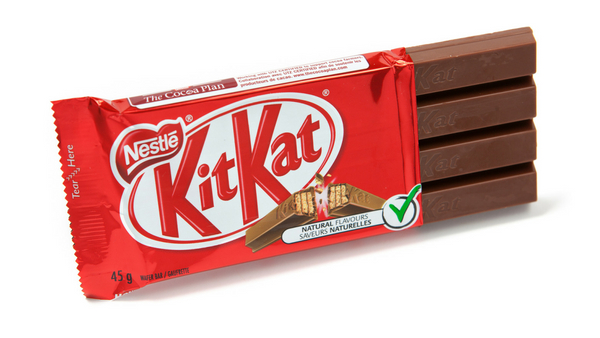Author
In a long awaited decision, the highest Court in the EU, the European Court of Justice (‘CJEU’), has confirmed that Nestlé has not demonstrated that its 3D trade mark has acquired distinctiveness and is not therefore capable of trade mark protection.
Background
Nestlé’s trade mark for the 3D shape of its four finger chocolate wafer bar (shown below) was originally registered in 2006 by the European Intellectual Property Office (‘EUIPO’ previously OHIM).
In 2007, Cadbury Schweppes (now known as Mondelez UK Holdings and Services Ltd) applied to the EUIPO to invalidate Nestlé’s mark on the basis that consumers were not able to distinguish the chocolate bar as originating from Nestlé on the basis of the shape alone.
The EUIPO rejected Cadbury’s application in 2012 as it considered that Nestlé had shown sufficient evidence that the shape had acquired sufficient distinctiveness amongst consumers in the EU.
Cadbury appealed this decision and, as I discussed back in 2016, the European General Court agreed with Cadbury that the EUIPO had come to the wrong conclusion. Nestlé had only shown use of the 3D trade mark in 10 of the 15 EU member states (at the time) and this was not sufficient for the EUIPO to find acquired distinctiveness throughout the EU.
Nestlé appealed to the CJEU on the grounds that the General Court’s requirement for an owner of an EU trade mark to show that its trade mark has acquired distinctive character through use in each of the member states separately was wrong. Cadbury also appealed that the finding of acquired distinctiveness in the 10 member states for which Nestlé submitted evidence was wrong.
In April of this year, the Advocate General gave his opinion, to guide the CJEU decision. He confirmed that Nestlé had not provided sufficient evidence of use to show consumers across all EU member states could distinguish Nestlé’s chocolate bar as originating from Nestlé on the basis of the shape alone. In particular, evidence was missing from Belgium, Ireland, Greece and Portugal. He did suggest that the Court could take a pragmatic approach and extrapolate evidence across member states where the same distribution networks and marketing techniques were used. However, as this was not provided by Nestlé, its appeal should be dismissed.
What did the CJEU decide?
The CJEU has now confirmed that although it is not necessary for trade mark owners to provide separate evidence of acquired distinctiveness of their trade mark for all member states, the evidence submitted must be capable of showing acquired distinctiveness throughout the member states where a mark is not inherently distinctive. This was not provided by Nestlé. The CJEU therefore held that the General Court was right to annul the EUIPO decision of validity and dismissed both Cadbury and Nestlé’s appeals.
What next for KitKat?
The EUIPO now has to decide whether to reject Nestlé’s trade mark, which it will likely do. If it does, Nestlé would still have the option to re-file its trade mark application and submit more extensive evidence of acquired distinctiveness, although the same risks would still apply. As discussed in previous decisions, Nestlé faces an uphill struggle (like many 3D shape trade mark applicants) to show that the shape alone and not the combination of shape and word mark together is distinctive.
KitKat’s next steps will be no doubt be a carefully considered commercial decision, taking account of the protection offered by Nestlé’s national trade marks for the 3D shape and the commercial risks of discounter and competitor copycats in countries where Nestlé has not secured registered trade mark protection, which may well now get the go-ahead.
For trade mark owners, the CJEU’s judgment gives useful guidance in relation to trade marks which are not inherently distinctive (for example shapes and descriptive words), where acquired distinctiveness would need to be shown if challenged. However, this is the CJEU’s first indication of this approach. Further clarity on the importance of the type and amount of evidence needed to clear the bar for acquired distinctiveness will be awaited with interest.
We will keep you updated.
The judgment of the CJEU is available here.
For more information please contact Charlotte Bolton, Associate in the Commercial Dispute Resolution Team, on charlotte.bolton@michelmores.com or +44 (0)1392 687745.

